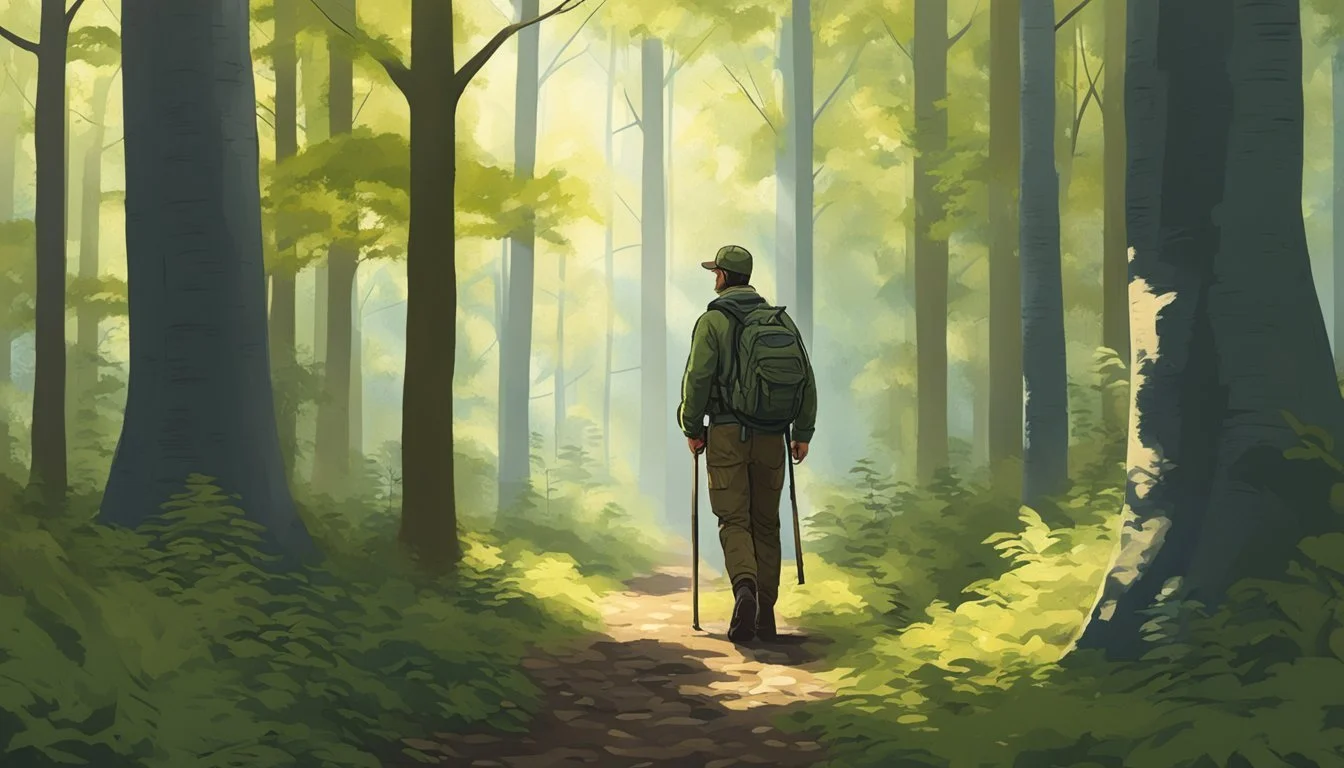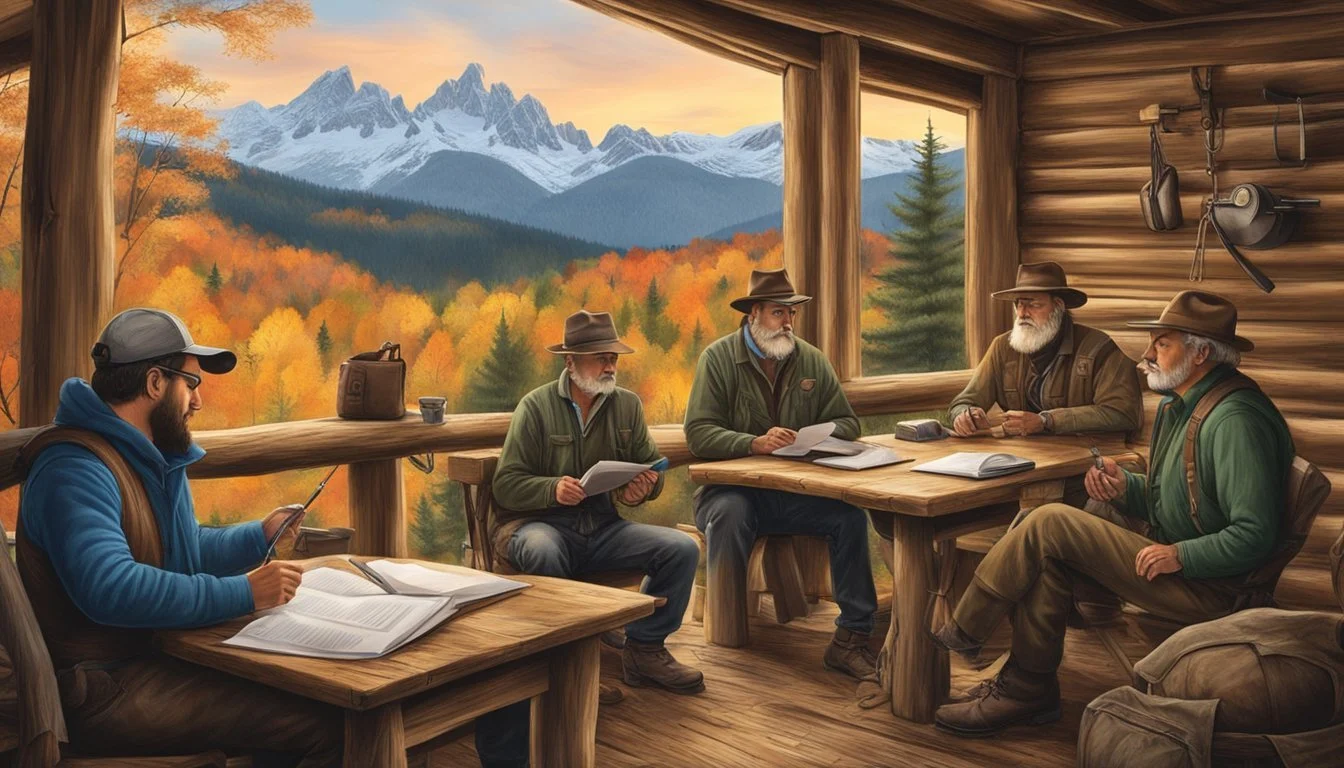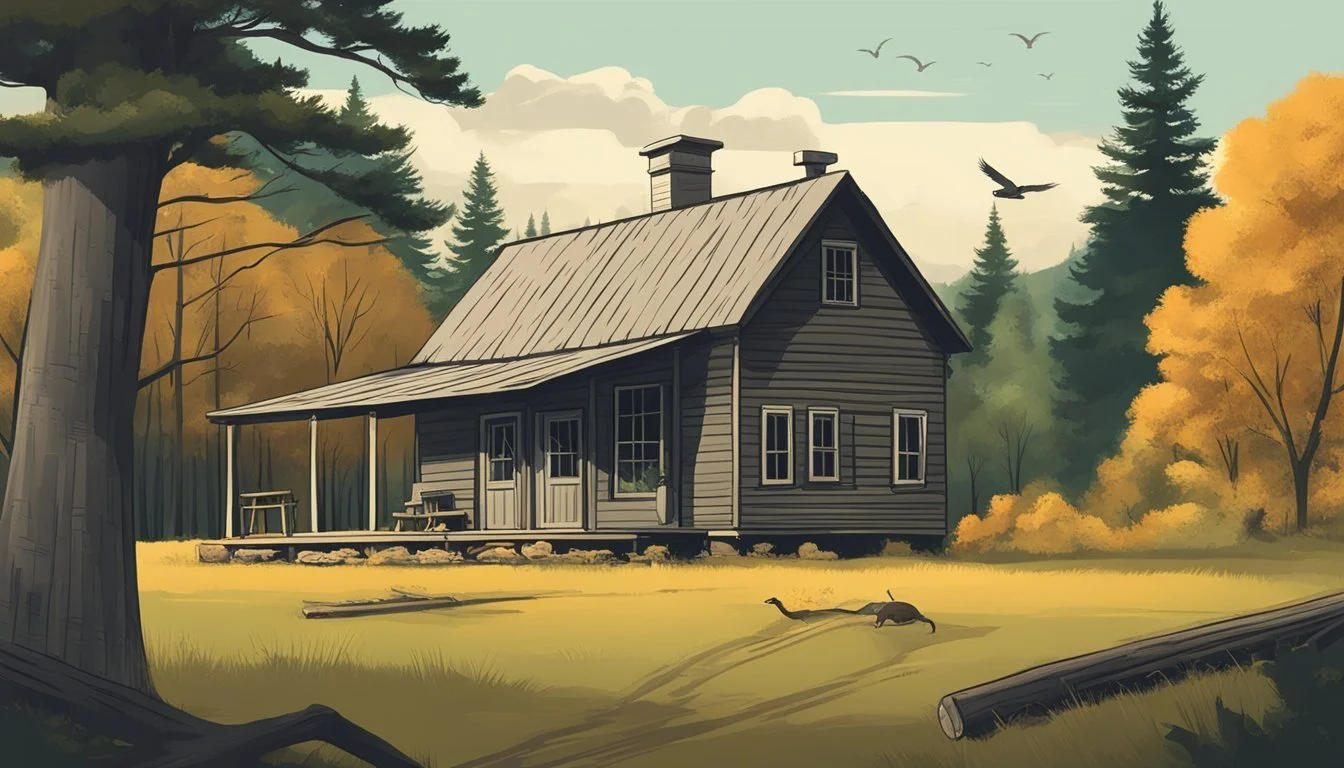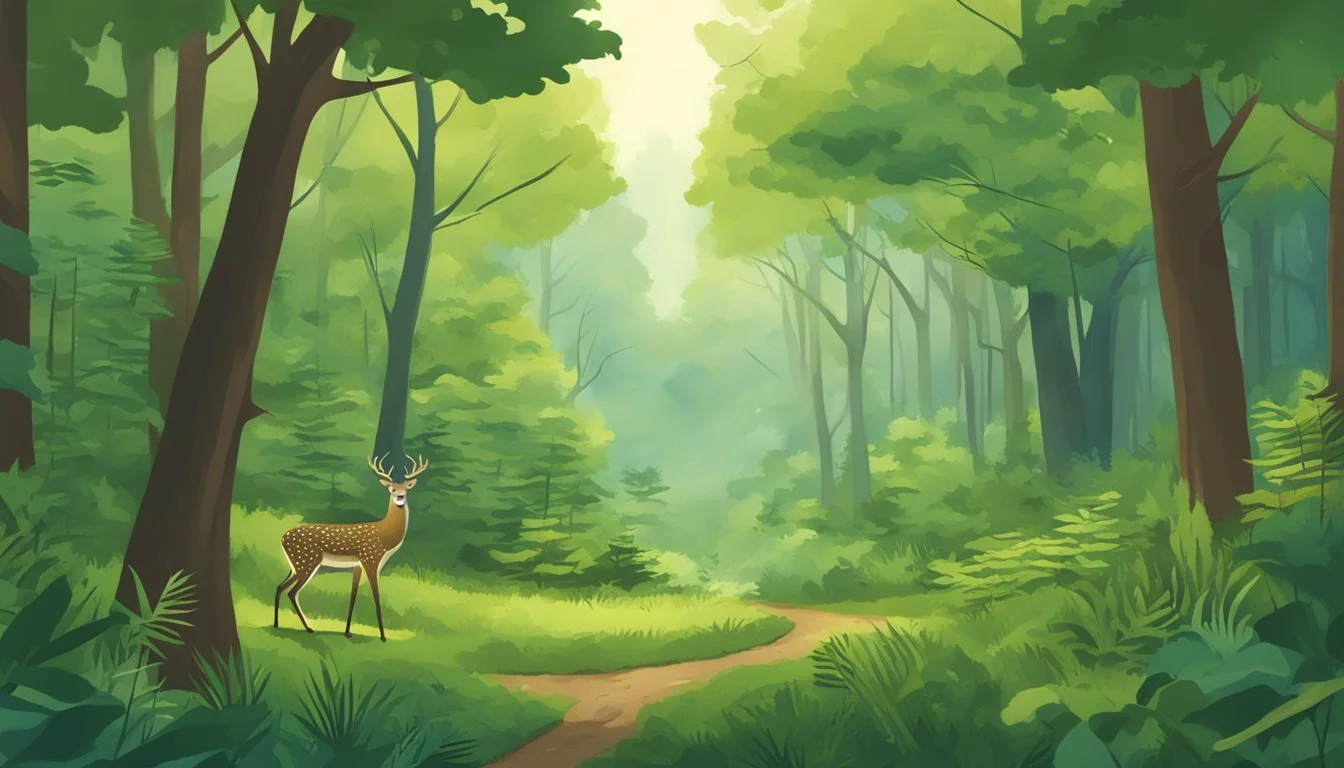Hunting Leases New York
Securing Your Next Adventure Spot
Hunting leases in New York State provide hunters with private land opportunities, enhancing their outdoor experience and increasing their chances of a successful hunt. With nearly 700,000 New Yorkers and over 50,000 nonresidents participating in the sport, hunting is a significant form of wildlife recreation in the state. Leases can range from small parcels suitable for a few friends to large tracts of land capable of accommodating hunting clubs.
The demand for hunting leases in New York has grown alongside the appreciation for wildlife management and sustainable hunting practices. Landowners lease their properties to hunters for various reasons, including income generation and wildlife population control. These arrangements benefit both parties: landowners earn from their land, while hunters gain exclusive access to managed habitats that are often rich in game.
A variety of game is available across the state, with species such as deer, turkey (What wine goes well with turkey?), and small game being common targets. Hunting properties may offer additional amenities, like ponds stocked with fish, which add value to the lease. Each lease agreement typically includes specific terms regarding the number of hunters allowed, types of game, and acceptable hunting methods to ensure the safety of all parties and the conservation of wildlife.
Understanding Hunting Leases
Hunting leases provide a structured agreement for hunters to access private lands for wildlife recreation. They are essential for both landowners and hunters in managing hunting activities and ensuring the sustainable use of wildlife resources.
Lease Types
In New York, hunting leases can range from short-term agreements to long-standing yearly contracts. Short-term leases are typically sought for seasonal hunts or specific game, whereas long-term leases offer extended access to the land and may include additional benefits such as planting food plots.
Available leases may vary by:
Location (proximity to state parks or specific game populations)
Size of the land (measured in acres)
Type of game (e.g., Whitetail Deer)
Benefits of Leasing
For hunters, leasing land ensures exclusive or managed access to prime hunting territories without the responsibilities of ownership. Leases often stipulate the number of hunters allowed, thus reducing pressure on the game and improving the quality of the hunting experience.
For landowners, leasing provides a stream of income and helps in managing the wildlife populations on their property. Additionally, many leases come with hunting liability insurance, safeguarding the interests of both parties in case of accidents or property damage.
Price considerations for leases depend on:
The location and quality of the hunting land
Duration of the lease
Insurance requirements
Amenities included, such as access to water sources or the use of ATVs
New York Hunting Overview
New York offers diverse hunting opportunities for enthusiasts seeking to engage in wildlife recreation. The state's management practices support a range of species including deer, turkey, and waterfowl, aiming for a balanced ecosystem and a rewarding hunting experience.
Hunting Seasons
Deer: New York's deer hunting seasons vary by zone, but generally, archery season can open as early as September, followed by a regular season and a late bow/muzzleloader season.
Turkey: There are two turkey seasons in New York—spring and fall. The spring turkey season typically runs through the month of May, while the fall season dates vary by region.
Duck and Waterfowl: These seasons are split into various zones with staggered start and end dates typically starting in early October and extending into January.
Black Bear: Hunting seasons for black bear in New York also vary by region, with some beginning in early September and others in mid-November.
Wildlife Management
New York employs a Wildlife Management strategy designed to sustainably balance the populations of game species. They achieve this through:
Hunting Licenses: Regulated by the state to manage the number of hunters and ensure conservation efforts are met.
Quality Deer Management (QDM): This includes antler restrictions in certain areas to promote healthy deer populations and improve mature buck chances.
The state does not have an elk population, so elk hunting is not applicable in New York. Hunters must obtain the appropriate hunting license for the species they intend to hunt, and they are expected to adhere to all state regulations and seasons to ensure the responsible stewardship of New York's wildlife resources.
Finding Hunting Leases in NY
In New York, securing a hunting lease involves exploring reliable online resources and engaging with local hunting communities. These avenues provide access to a diverse range of properties, each with their own unique hunting opportunities and pricing structures.
Online Resources
Websites: They serve as comprehensive platforms for hunters to browse available properties for lease. Users can find extensive listings that often include detailed descriptions of acreage, habitat, and pricing.
Hunting Lease Network: Offers a selection of timber hunting grounds with existing trails. Properties are described in detail, including specific features like walkability and strategic ledges for hunting.
Base Camp Leasing: Streamlines the search for annual exclusive hunting privileges in New York, ensuring adherence to the Department of Environmental Conservation's regulations.
HLRBO (Hunt Lease Rent Buy Own): Allows hunters to search thousands of private hunting leases, filterable by state, county, and type of game.
HuntingLocator.com: Features a user-friendly interface to find hunting land for lease in New York with aerial mapping tools to scout properties.
Land Lease: Provides Google Earth links for a virtual view of the terrain, a helpful tool for evaluating the hunting land before leasing.
Key Information Provided by These Resources:
List of properties: Easy-to-navigate catalog of hunting leases.
Specific acres: Clear information on the size of each property.
Lease price: Knowledge of the cost involved ahead of time.
Local Hunting Communities
Hunting Clubs and Associations: These groups often have inside knowledge on available leases that may not be widely advertised. Joining such communities can be invaluable for networking and finding exclusive offers.
Local Real Estate Agents: Specializing in rural properties, these professionals can provide tailored options that match a hunter's specific needs. They understand the market trends and can offer properties that align with budget considerations.
Hunting Shows and Expos: These events are fertile grounds for finding leads on hunting land for lease. Vendors and experienced hunters often share information on leasing opportunities in informal settings.
Exploring Lease Locations
Hunting leases in New York are diverse, offering various locations and game types. The state's regulated landscapes ensure sustainable hunting opportunities.
By County
Allegany County: Renowned for its ample deer population, Allegany County offers leases that often result in successful hunts, including events like the notable harvest of a 10-pointer buck.
Schuyler, Chemung, and Tioga: These counties provide a mix of hunting experiences with proximity to state parks and a variety of terrain conducive to both large and small game.
Syracuse and Ithaca Areas: Proximity to these urban centers might limit available leases, but surrounding counties offer accessible locations for avid hunters.
By Type of Game
Deer: Plentiful across the state, with higher concentrations in rural counties, deer hunting is a primary focus of New York leases.
Turkey and Duck: Spring and fall turkey hunting seasons, as well as migratory duck seasons, provide hunters with ample opportunities.
Bear: While not as common as deer, bear hunting is an attraction in regions with denser wilderness.
Fish: Pond leases, such as those near Jamestown, enhance the hunting lease experience and can include trout and other species.
Salmon River Area: Known for its fishing, particularly salmon, this area also offers nearby hunting lease opportunities for various game.
Evaluation of Hunting Grounds
When selecting a hunting lease in New York, a thorough evaluation of the grounds relating to the habitat and access is paramount to ensuring a successful and enjoyable hunting season.
Habitats and Ecosystems
New York State's hunting grounds are renowned for their diversity of ecosystems, ranging from dense hardwood stands to coniferous hemlock stands. The quality of these habitats directly influences the wildlife populations and their patterns. For instance, the timberland in Chautauqua County includes a mix of mature trees and understory that provides excellent coverage for whitetail deer. Hunters should also consider the presence of water sources, like ponds, which can attract a variety of game and are noted as bonuses on some leases.
Important Ecosystem Characteristics:
Timberland: Healthy populations of oak trees contribute to a thriving ecosystem.
Woodlots: Smaller woodlots can provide ample cover and forage for wildlife.
Forests: Larger expanses of forests may support more significant numbers of game but require strategic planning to hunt effectively.
Topography and Accessibility
The topography of a hunting lease can greatly impact hunting strategies and success. Grounds with varied topography, like those near Letchworth State Park, provide natural corridors for deer movement, making them ideal for setting up stands. Ease of access is another critical factor, as properties with a developed road system and ATV trails can allow hunters to navigate the grounds effectively, particularly when dealing with changes in wind direction that require repositioning. However, one must note that ATV use may be restricted to hunting purposes. Additionally, leases may offer pre-existing logging trails, providing quieter entry and exit paths, as well as opportunities for trapping or setting up camps.
Accessibility Features to Consider:
Road System: Evaluate the condition and extent of the road system for vehicle access.
ATV Trails: Check for the availability and rules regarding ATV trail use.
Hiking and Accessibility: Determine if the land is traversable on foot for instances when motorized access is not feasible or allowed.
Logging Trails: Existence of logging trails can enhance the accessibility to remote areas of the lease.
Lease Agreements and Regulations
When entering into hunting lease agreements in New York, lessees must be attentive to the contract specifics and regulatory compliance. These agreements are legal tools ensuring mutual understanding between landowners and hunters about the terms, responsibilities, and activities allowed under the lease.
Contract Details
In New York, hunting lease agreements should clearly detail the rights and obligations of both the landowner and the lessee. The typical components of a lease agreement include:
Duration: Specify the start and end dates of the lease term.
Cost: Define the leasing fee and payment schedule.
Insurance: Outline requirements for liability insurance to protect both parties.
Permitted Activities: List allowable activities, which may include hunting, camping, hiking, and use of snowmobile or ATV trails.
Game Management: Discuss any wildlife management practices expected to be followed.
The lease should also mention any restrictions, such as designated no-hunting areas, to prevent misunderstandings.
State Regulations and Compliance
All parties must adhere to New York's hunting regulations, which include:
Licensing: Lessees must hold valid New York hunting licenses.
Species and Seasons: The lease must respect state-defined hunting seasons and permissible game species.
Safety: Compliance with state safety regulations, such as wearing blaze orange during certain seasons, is mandatory.
Reporting: Any harvest must be reported as per state requirements.
Finally, if the lease land includes trails for snowmobiles or ATVs, lessees must comply with New York's regulations governing the operation of these vehicles, including age restrictions and registration requirements.
Costs Associated with Leases
When considering hunting leases in New York, various costs come into play, which are critical for interested hunters to understand. The price of a lease can significantly fluctuate based on factors like location, size of the land, and the type of game available.
Most leases are priced per acre, with rates depending on the quality of hunting land and its proximity to urban areas. For instance, leases closer to cities or known hunting hotspots may command higher prices. A typical range might start from under $1,000 and climb, influenced by the lease's attributes.
Available leases might also include additional costs for timber harvest rights if the land is forested. This can be a separate charge or, occasionally, integrated into the lease price, depending on the landowner's policies.
Here's a simplified breakdown of potential costs:
Basic Rent: Fee paid for the right to hunt on the property.
Insurance: Some landowners require hunters to carry liability insurance, which may add to the overall expense.
Timber Harvest Fees: If applicable, extra costs for harvesting timber.
Maintenance and Improvement Fees: Charges for maintaining hunting stands, roads, or other property improvements, if not covered by the rent.
It's wise for hunters to inquire about all the costs entailed before entering a lease agreement to avoid unforeseen expenses. They should also ensure a clear understanding of what the lease entails regarding game types available and any seasonal or usage limits impacting the rent value.
Note: The provided data offers a general perspective; hunters must always confirm specific lease terms and associated costs directly with leaseholders to ensure accuracy.
Managing and Enhancing the Land
Land management is critical for maintaining a robust wildlife habitat and ensuring the sustainability of timber resources. Effective practices not only support the ecosystem but also enhance the appeal and value of hunting leases in New York.
Habitat Improvement
Improving habitat quality for wildlife is essential for landowners wishing to create a prime hunting environment. This involves establishing balance by ourishing native vegetation, which provides food and cover for game species. Landowners often undertake selective clearing and planting of food plots to enrich the available resources for animals. Additionally, the creation and maintenance of water sources, such as ponds or streams, are vital for sustaining diverse wildlife populations.
Key interventions include:
Food Plots: Cultivate crops like clover or brassicas.
Cover: Preserve thickets that offer shelter.
Water Resources: Develop and manage water features.
Timber and Forest Management
Sustainable timber and forest management practices are critical in New York’s timberlands. Responsible timber harvest can promote growth in young forests, offer varied habitats, and improve food availability. Foresters engage in careful planning to determine which trees to harvest, considering the long-term health and diversity of the forest.
To cultivate a thriving forest ecosystem, these methods might be employed:
Thinning: Selective removal of certain trees to reduce competition.
Clearcutting: (when appropriate) to reset succession stages and foster new growth.
Trapping and Hunting: Utilized as tools to manage wildlife populations and preserve the balance within the ecosystem.
Recreational Opportunitie
New York's hunting leases not only provide access to diverse wildlife but also open the door to numerous outdoor activities throughout the seasons. The leases cater to both avid hunters and outdoor enthusiasts seeking various year-round adventures.
Beyond Hunting
Hunters can benefit from the multi-use nature of these lands, where fishing is often a popular off-season activity. Many properties boast ponds and streams ideal for anglers seeking a serene fishing experience. In addition to hunting and fishing, camping allows individuals and families to immerse themselves in nature, often with the convenience of clearings or designated sites that can be used for setting up camp.
Seasonal Activities
During specific times of the year, leased lands in New York provide perfect backdrops for hiking and snowmobiling. Hiking opportunities range from gentle walks to challenging treks across various terrains, allowing for nature watching and physical exercise in a scenic environment. Snowmobile enthusiasts can find leases with trails that become a winter wonderland, offering thrilling rides through snowy landscapes. Furthermore, properties with ATV trails cater to riders looking to explore the terrain on four wheels, providing an adrenaline-fueled way to enjoy the outdoors.
Additional Resources and Contacts
When seeking hunting leases in New York, having the right contacts can streamline the process. Landowner contacts offer direct communication for potential leases, while hunting associations provide guidance, resources, and support.
Landowner Contacts
Prospective hunters can reach out to landowners for leasing opportunities. Specific platforms like Base Camp Leasing and Hunting Lease Network list available properties, often with direct contact information. For instance, in areas around Syracuse or Ithaca, interested parties should look for local listings that provide comprehensive details such as acreage and contact options.
Example Contact for Hunting Leases:
Name: Erin Smith (fictional example)
Location: Near Syracuse, NY
Acreage Available: 150 Acres
Contact: erin.smith@email.com
Hunting Associations
Hunting associations in New York can be invaluable for hunters looking for leases. These organizations often have databases of land available for lease and can provide recommendations. They can also be a good source for networking with fellow hunters who may be aware of available leasing opportunities.
New York Hunting Associations:
New York State Hunters Association
Website: NYS Hunters Association
Contact Page: NYS Hunters Contact
By leveraging both landowner contacts and hunting associations, hunters can more effectively locate and secure promising hunting leases throughout the state of New York.









